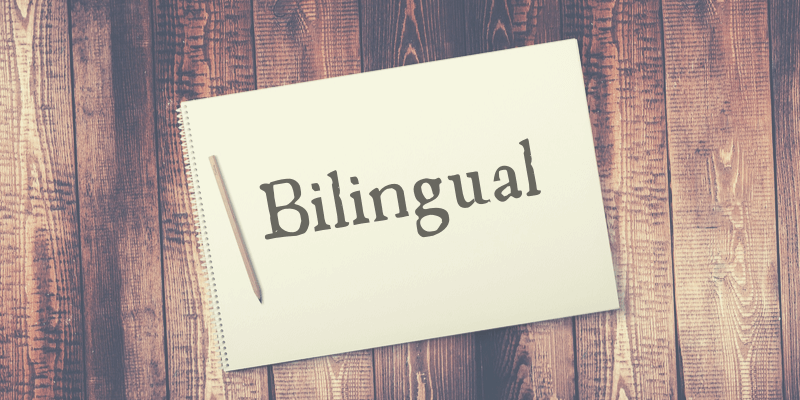We are fortunate to work with many bilingual families here at Therapy at Play. We have bilingual therapists that can provide speech and language services to children in their primary language (i.e., Spanish) and/or translate for parents. When we complete a speech and language evaluation for bilingual children, the speech-language pathologist (SLP) takes many aspects into consideration to determine if the child presents with a language disorder or a language difference.
What is bilingualism?
Bilingualism is an individual’s ability to communicate in more than one language. It can be thought of as a range of language skills, in which proficiency in any of the languages used may vary over time and across social settings, conversational partners, and topics, among other variables (Grossjean, 1989; Bialystok, 2001).
The following terms help describe how someone develops another language:
- Simultaneous bilingualism is when a child is exposed and acquires two languages at the same time. This typically happens when both languages are introduced to a child before 3 years of age.
- Sequential bilingualism is when a person is exposed to a second language after the age of 3. The child would already have some level of proficiency in the primary language before learning a second language.
Normal Processes of Second Language Acquisition
It is essential to understand the normal processes of second language acquisition before completing a bilingual speech and language evaluation in order to ensure an accurate diagnosis for bilingual clients. If these normal processes are not understood or known, children may be misdiagnosed.
- Interference/transfer occurs when a person makes an error in a second language (L2) due to the direct influence of their primary language (L1) structure. For example, English Language Learning (ELL) children may demonstrate interference or transfer from their primary language to English. The evaluating clinician needs to determine if their errors are influenced by the child’s primary/native language. Errors resulting from interference/transfer are not indicators of a disorder.
- Silent Period may occur during the initial phase of learning a second language. During this period, children are focusing on listening and comprehending the new language. As a result, children learning a new language are able to understand much more than she or he can produce.
- Codeswitching involves switching between two languages during conversation. Many fluent bilingual speakers engage in codeswitching and it is not indicative of a language disorder.
- Language loss is when an individual loses skills and fluency in their primary language as they learn a second language. This is also known as subtractive bilingualism. Typically, an individual’s vocabulary and grammar are affected by the language loss. They will demonstrate a more simplified grammatical system and vocabulary gaps.
- Accent, Dialect, and Phonetic Patterns influence bilingual individuals. Accent describes the way people pronounce sounds. Dialect is a rule-governed variation of a language. For example, African American English is a dialect. It follows different rules of language than Standard American English.
Difference vs. Disorder
For a SLP to identify a language disorder in a bilingual child, the SLP takes into consideration the multitude of factors (i.e., those mentioned above, as well as others) that influence communication skills. If a child has a language delay/disorder, this will be evident in all languages that the child speaks. Therefore, if a child’s communication skills are within the average range in their primary language (ex. Spanish), but their communication skills are below the average range in their second language (ex. English) then the child does not have a language disorder. The child is presenting with a language difference and is in the process of learning the second language (ex. English).
Language proficiency between languages may fluctuate with time. There are two types of language proficiencies that will need to be taken into consideration as well:
Basic interpersonal skills (BICS) are considered to be the everyday language that occurs in conversation. This typically requires 2 years to become proficient.
Cognitive academic language proficiency (CALP) is the language of academics, typically requiring 5 to 7 years to develop a level of proficiency similar to native speakers.
This helps us understand why most bilingual students can have conversations and interact with peers outside of the classroom, but continue to demonstrate difficulty in the academic setting. Observing an individual’s language skills in both of these areas is essential in developing an understanding of their language abilities.
Language of Intervention
Finally, after a bilingual child has been diagnosed with a language disorder our most common question is: Which language should intervention be in? Many factors are considered to determine the language of intervention, but here are three main factors to consider:
- Preservation of the home/emotional language is crucial for maintaining family connections.
- For impaired and intact language learners, evidence shows that there are faster gains in the second language when there is a stronger native/first language base.
- Maintaining the home language is important in order to provide generalization of communication skills across settings.
In conclusion, there are many considerations in determining if a bilingual child presents with a language disorder or a language difference. We look forward to supporting your child’s language skills at Therapy at Play!


